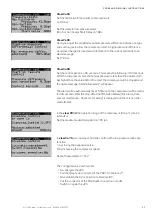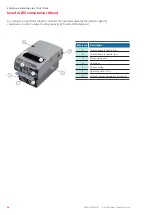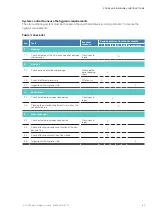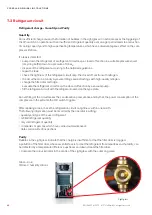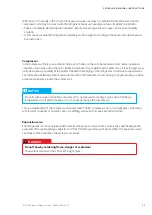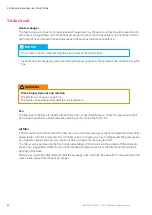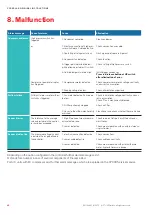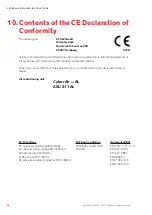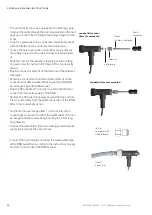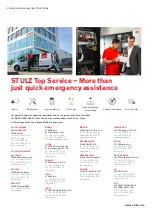
44
cyberlab original instructions
EN/02.2018/G17F © STULZ GmbH – all rights reserved
Heat exchanger
The heat exchanger consists of copper tubes with aluminium fins. If leaks occur, they should be searched for
at the heat exchanger. Beyond that, the heat exchanger is exposed to the air pollution, the particles of which
settle at the fins and reduce the heat transmission the same as raise the air resistance.
NoTiCE
Do not distort the fins while cleaning, this also increases the air resistance.
• clean the heat exchanger by pressurized air by blowing it opposite to the normal air flow direction along the
fins.
7.4 Air circuit
Fan
The bearings of the fans are lifetime lubricated and do not need maintenance. Check the operation current.
An increased operation current indicates a winding short circuit in the fan motor.
Air filter
A filter monitor controls the state of the filter. As soon as the pressure loss exceeds an adjustable value, a filter
alarm via the controller is released. The controller can be configured such as to compensate the pressure loss
by a higher fan speed, however you should not wait too long for exchanging the filter.
The filters can be accessed by the front doors, depending on the cabinet size the number of filter elements
varies. The clogged filter elements can not be cleaned with pressurized air, as the filter structure would be
destroyed otherwise.
When you re-install the filter elements after the exchange, take care that the side with the coloured mark (dirt
side) is turned away from the heat exchanger.
wARNiNg
Risk of injury by burns and rotation
The electronics housing can get hot.
The fan has an operation delay after the unit is stopped !








